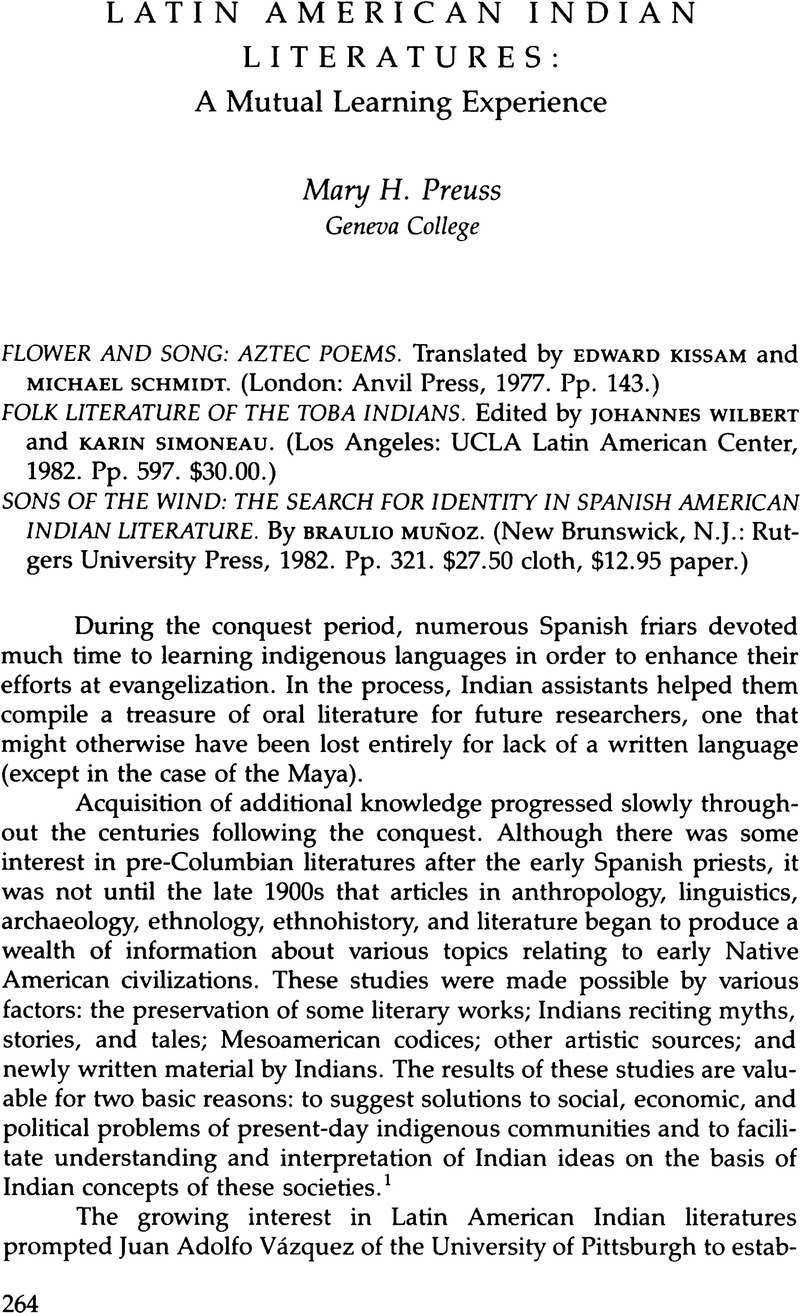No CrossRef data available.
Published online by Cambridge University Press: 12 October 2022

1. Juan Adolfo Vázquez, “The Field of Latín American Indian Literatures,” Latin American Indian Literatures 1, no. 1 (Spring 1977): 10.
2. The first annual meeting was held 21–22 April 1983 at the University of Pittsburgh. Forty-eight papers were presented in the panel sessions. Miguel León-Portilla of the Universidad Nacional Autónoma de México gave the keynote address on the topic of “Translating Amerindian Texts—Differences of Culture and Semantics.” Johannes Wilbert of the University of California at Los Angeles spoke on “Myths and the Art of Thinking in Images.” The Second International Symposium on Latin American Indian Literature was held at George Washington University 27–28 April 1984. More than fifty papers were read, and Peter A. Furst of SUNY, Albany gave the keynote address, “The Contributions of Leonhard Schultze Jena to Latin American Indian Literatures.” Edmundo Bendezu of the Universidad de San Marcos in Lima spoke on “José María Arguedas and the Indigenista Novel.” The LAILA/ALILA Newsletter is published in January, May, September, and December. The first issue covers the yearly symposium, and the other three issues provide information about the organization, members, and their publications, about conferences and symposia, as well as other pertinent news, a periodical index, and selections from Latin American Indian literatures.
3. Miguel León-Portilla. “Translating the Amerindian Texts,” Latin American Indian Literatures 7, no. 2 (Fall 1982):113.
4. Regarding Nahuatl influences in Chicano poetry, the reader may wish to consult John Bruce-Novoa's Chicano Poetry: A Response to Chaos (Austin: University of Texas Press, 1982).
5. León-Portilla, “Translating the Amerindian Texts,” p. 118.
6. See Native American Mesoamerican Spirituality: Ancient Myths, Discourses, Stories, Doctrines, Hymns, Poems from the Aztec, Yucatec, Quiché Maya, and Other Sacred Traditions. (New York: Paulist Press, 1980). This work contains extensive notes and numerous poems translated by Miguel León-Portilla, J. O. Arthur Anderson, Charles Dibble, and Munro S. Edmonson.
7. For example, Star-Woman, the great fire, the flood, the long night, the great darkness, the origin or women, the origin of fire, the rainbow snake, the origin of pottery making, Nedamik the transformer, the fox and the jaguar, the mite and the ostrich, the jaguar and the armadillo, Carancho kills the man-eating bird, and Asin.
8. Stith Thompson, Motif-Index of Folk Literature, 6 vols. (Bloomington: Indiana University Press, 1955–1958).